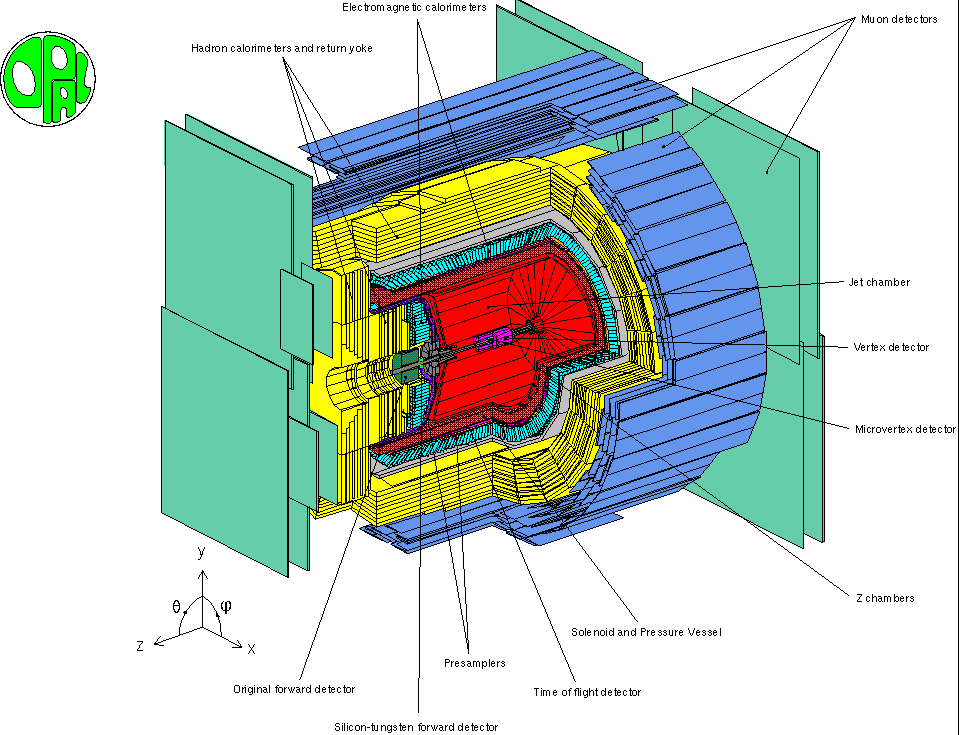The OPAL Detector

OPAL is an acronym for Omni-Purpose Apparatus at LEP and was one of four experiments associated with LEP (the Large Electron-Positron collider) at the European laboratory for high-energy physics at CERN. The OPAL collaboration consisted of over three hundred physicists from 32 institutions around the world.
You are invited to take a tour of OPAL . There is also a general OPAL home page which you are welcome to look at.
The Cambridge HEP group was responsible for several parts of the experiment:
- Vertex Drift Chamber
- Track Trigger
- Silicon Microvertex Detector
- Endcap Electromagnetic Calorimeter
- Monte Carlo Simulation
- Graphics for Event Display
OPAL Physics
LEP1
The first decay of a Z boson at LEP was observed by OPAL on 13 August 1989. By the end of 1995 around 5 million events had been recorded, leading to over 400 published OPAL papers as well as numerous conference reports and theses. You may like to look at a general review of recent OPAL physics results.
The Cambridge HEP group worked mainly in the following areas at LEP1:
LEP2
From autumn 1995, the energy of LEP was progressively increased, and exceeded 100 GeV per beam in August 1999. The aims of this phase of LEP were to study the properties of the W± bosons, and to search for new particles such as the Higgs boson.
The Cambridge group worked especially in the following areas of LEP2 physics:
